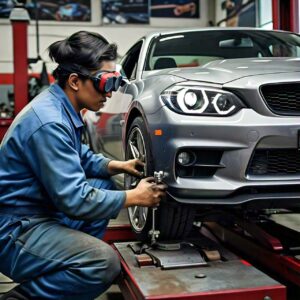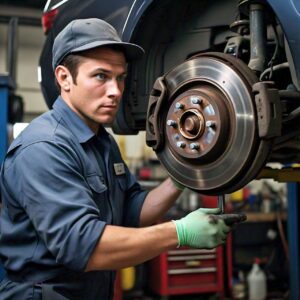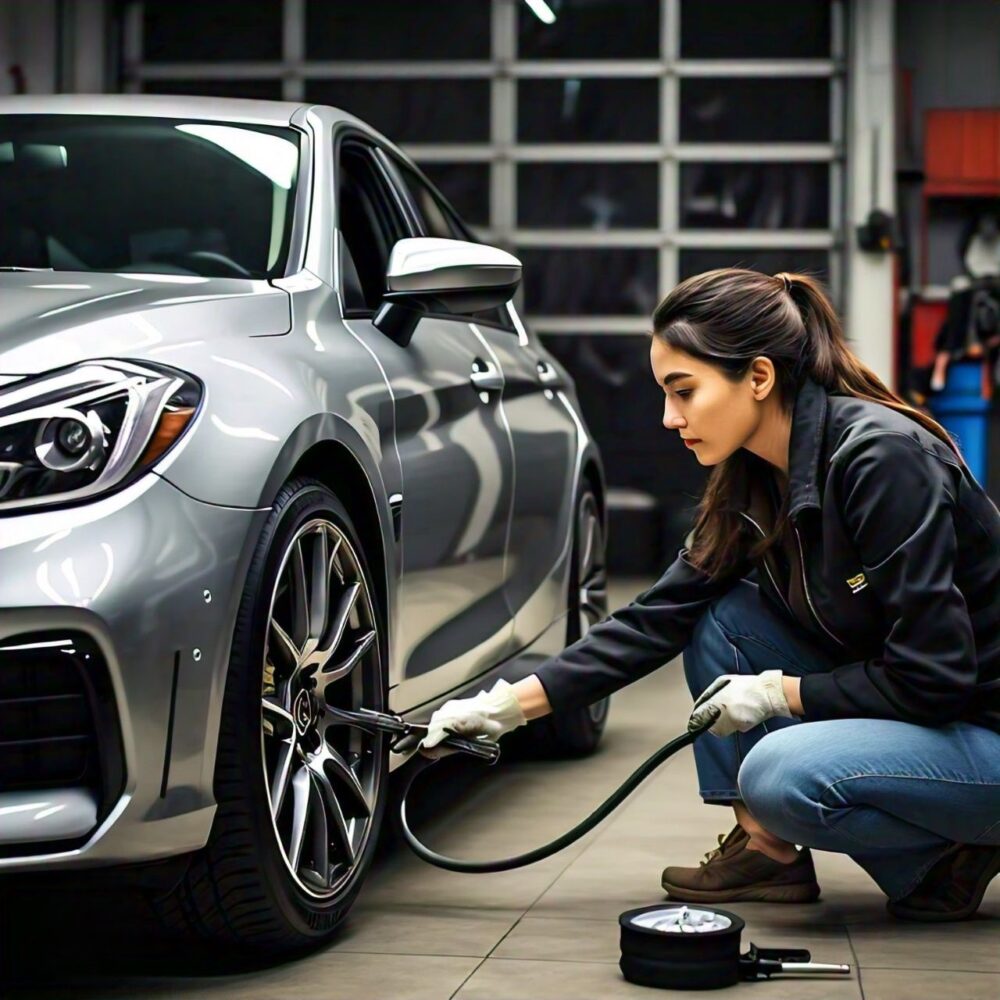The savings are based on driving 32,186 kilometers per year, in a car that gets 8.5 km per liter, with gasoline priced at AUD 5.70 per gallon.
Keep Your Tires Properly Pressurized
Surveys reveal that 60-80 percent of vehicles on the road have underinflated tires, leading to hundreds of dollars wasted annually on fuel. Additionally, low air pressure causes premature tire wear, reducing tire lifespan. For optimal results, check your tire pressure with a digital gauge and fill to the recommended level shown on the decal inside the driver’s door or on the door pillar.
Replace Your Spark Plugs Early for Big Savings
 If your 100,000-mile spark plugs have 80,000 miles on them, they’re 80 percent worn. Misfires and incomplete combustion become more frequent during the last 20,000 miles. Since you have to replace your spark plugs eventually, do it early to save on potential costs. Even replacing the plugs one extra time over the life of your car can be beneficial. Don’t assume your plugs are always good for 100,000 miles—many four-cylinder engines need new spark plugs at 30,000- or 60,000-mile intervals.
If your 100,000-mile spark plugs have 80,000 miles on them, they’re 80 percent worn. Misfires and incomplete combustion become more frequent during the last 20,000 miles. Since you have to replace your spark plugs eventually, do it early to save on potential costs. Even replacing the plugs one extra time over the life of your car can be beneficial. Don’t assume your plugs are always good for 100,000 miles—many four-cylinder engines need new spark plugs at 30,000- or 60,000-mile intervals.
Save Money by Replacing Your Air Filter Often
Your engine draws in 14 million gallons of air through the air filter annually. In older vehicles (pre-1999), a dirty air filter can increase fuel consumption by nearly 10 percent. In newer vehicles, the computer adjusts for lower airflow, reducing fuel usage but also decreasing engine power and acceleration. Check your air filter when changing your oil and replace it at least once a year, or more frequently if you drive in dusty conditions.
Maintain Car Alignment for Better Performance
 If your tires are misaligned by just 0.017 inches, it’s like dragging them sideways for 102 miles for every 20,000 miles you drive. To check your alignment without a visit to the shop, use a tread depth gauge to measure the tread depth on both edges of each tire, including the rear ones. Uneven wear on one side indicates that your car needs to be aligned.
If your tires are misaligned by just 0.017 inches, it’s like dragging them sideways for 102 miles for every 20,000 miles you drive. To check your alignment without a visit to the shop, use a tread depth gauge to measure the tread depth on both edges of each tire, including the rear ones. Uneven wear on one side indicates that your car needs to be aligned.
The Benefits of Driving at the Speed Limit
Speeding takes a toll on both your fuel efficiency and finances. While aerodynamic drag isn’t a major issue in city driving, it becomes significant at speeds over 55 mph. For example, increasing your speed to 65 mph boosts drag by 36%, potentially costing you an extra $510 per year if you do a lot of highway driving. To save money and improve fuel economy, aim to drive closer to 55 mph and use cruise control.
Identifying Brake Drag Issues
Brake drag can significantly affect your fuel efficiency. Rusty or binding brake calipers increase drag and decrease gas mileage. To check for brake drag without a professional inspection, use a non-contact infrared thermometer. After driving, remove the wheel cover if necessary and measure the temperature of the wheel hub with the thermometer. If the temperature difference between the right and left sides exceeds 20%, it likely indicates a dragging brake or wheel bearing issue, warranting a visit to a repair shop.
Regularly Check Warning Lights for Car Health
 Don’t overlook your warning lights, particularly the check engine light. It’s not just an emissions issue—it’s a signal that your vehicle is burning fuel inefficiently. This not only leads to wasted gas but also puts extra strain on your catalytic converter, potentially causing it to fail prematurely. Replacing a catalytic converter can cost over $1,000, and you’ll still need to resolve the underlying problem. Often, a faulty sensor or a vacuum leak is to blame. Addressing these issues promptly can save you a significant amount in fuel costs and prevent costly repairs.
Don’t overlook your warning lights, particularly the check engine light. It’s not just an emissions issue—it’s a signal that your vehicle is burning fuel inefficiently. This not only leads to wasted gas but also puts extra strain on your catalytic converter, potentially causing it to fail prematurely. Replacing a catalytic converter can cost over $1,000, and you’ll still need to resolve the underlying problem. Often, a faulty sensor or a vacuum leak is to blame. Addressing these issues promptly can save you a significant amount in fuel costs and prevent costly repairs.
ENDNOTE
In summary, keeping an eye on your vehicle’s warning lights and addressing issues promptly can prevent unnecessary fuel waste and costly repairs. Regular maintenance, such as checking tire pressure, replacing spark plugs, and ensuring proper alignment, plays a crucial role in maintaining optimal fuel efficiency. By staying vigilant and addressing minor issues before they escalate, you not only save on fuel costs but also protect your vehicle from more significant damage, ensuring a smoother and more economical driving experience.

